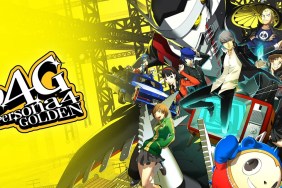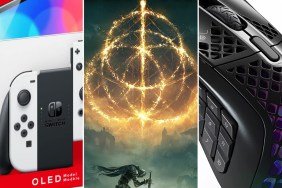Don’t push me ’cause I’m close to the edge.
Alas, by some strange matter of fate, or perhaps by the pluriform variables of mere chance in its “commodius vicus of recirculation”, the Motorstorm series and Yours Truly have once again found themselves occupying overlapping regions of space-time.
[image1]Two years ago, things were different. Having just purchased a monolithic new 60GB PS3 and growing tired of playing endless repetitive matches of Resistance: Fall of Man and Warhawk online, I acquired a copy of the recently released Motorstorm for the PS3 from a local rental outlet and prepared for simple satisfaction. I did not expect a title which would “wow” me with its innovations, but rather one which would be flashy and solid enough that it wouldn’t matter if there were superior alternatives on the system. Motorstorm for the Playstation 3 was kinda like the stereotypical “rebound girlfriend/boyfriend" who is inarguably hot and fun to play with, but who really didn’t have all the brains or personality in the world. You could probably have done better when looking for a long-term relationship, but how could you complain with headlights like those?
Motorstorm: Arctic Edge is the sort of game which makes perfect sense to a corporate executive. Take one of the PS3’s best-selling early exclusive franchises, palette swap/remix/downgrade it enough for a portable audience, release via digital distribution on the PSN, profit. The PS2 and the PSP have similar enough hardware specifications that a port between the two would be nearly identical and thus not much of a financial risk.
On the PSP, Bigbig Studios did their damnedest to push a game that has a polished yet unabashedly formulaic aesthetic, strong graphics, and a robust eight-player online mode which all belie the technical limitations of the PSP and its small LCD screen. When this experience is brought home to the PS2, however, savvy gamers will mainly feel left out in the cold.
[image2]The premise of any Motorstorm title is simple, and that goes for Arctic Edge as well. A bunch of extensively well-equipped would-be road warriors take to the great unstained wildernesses where they throw massive generator parties, act “edgy”, and in general fuck pristine natural shit up. All the while, these (dare I say it?) extreme racers throttle boldly into the future, flirting alongside the abyss and racing for the glory of victory or the aching burn of defeat.
It’s the same kinda attitude and style that longtime gamers will have seen and experienced in arcade racing games a thousand times before, done satisfactorily well, and spit-polished to a frosty gleam. You’ll find a relatively standard single-player points-based mode of progression up a series of numerical ranks along a helical staircase-like design (dizzy yet?), allowing players the chance to while selecting the appropriate level and event. The challenge isn’t too severe and the A.I. is mostly acceptable competition in a dim-witted but aggressive way.
Multiplayer is present and pleasant enough to make note of. Even a hardened cynical game reviewer like me was impressed by the fluidity and coherence of Motorstorm: Arctic Edge’s split-screen mode. The PS2 may be aging, but it can still push quite a few polygons around given the right developer and enough cups of coffee. Frame-rates hardly stutter and there is a fair amount of group fun to be had, as long as none of your friends mind that there is nothing screamingly new about the experience. Perhaps it’s understandable, but the online play of the PSP Arctic Edge is absent from the PS2 release, and it didn’t take long before I quickly found myself yearning for more variety.
[image3]As a critic, I wonder whether it’s even worth the effort to provide a detailed analysis of a port. What sort of prospective audience does a game like Motorstorm: Arctic Edge for the PS2 really have? Yes, I’m aware that the venerable PS2 continues to sell at a significant clip some nine years into the system’s lifespan, but how can anyone really expect there is any room for a game which is so nonchalantly inconspicuous as M: AE in a library as diverse, huge, and full of countless other bargain basement arcade racing experiences as the PS2’s? If the first Motorstorm was just a shallow-but-fun show piece for the fledgling PS3, then what can be said about a port on the PS2 that has the same gameplay but lacks the original’s slick paint job, portability, and online play?
Harsh though my criticisms may seem, this game isn’t by any means bad; instead, it is remarkably unremarkable. It’s almost as satisfying on a mechanical and visceral level as either of the other Motorstorm games, save for some simplified and occasionally glitchy physics, some muddy visuals, and some texture tearing.
For PS2 owners who don’t have a PSP or PS3 and want some non-narcotic nitrous-fueld action, it’s difficult to recommend Motorstorm: Arctic Edge even with a suggested MSRP of only $29.99. Without the online play or portability of its PSP sibling or the slick HD presentation of its PS3 forefathers, there isn’t really anything here to distinguish the PS2 M:AE from the competition. For less than thirty dollars combined, value conscious gamers looking for arcade racing thrills could surely go out and score copies of all three Midnight Club and all three Burnout titles for the PS2. How extreme is that?











